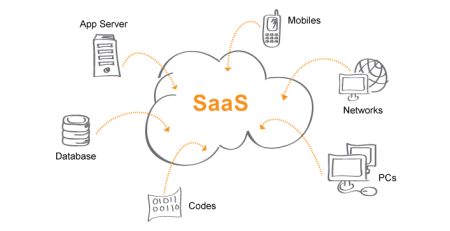13 Tips in Mitigating Cross-Border E-commerce and Cold Chain Challenges
Cross-border e-commerce has transformed international trade, allowing businesses to reach diverse clientele beyond geographical barriers. This expansion includes shipping perishable goods to various corners of the globe.
By integrating cold chain logistics, businesses can cater to this wider audience.
Additionally, it allows businesses to serve markets that demand specific conditions, particularly for products like temperature-sensitive medications that require strict temperature controls. Yet, this world of opportunities is not without its intricate challenges. Here are 13 practical strategies to navigate and conquer these obstacles effectively.
1. Leverage Sustainable Port Terminal Solutions
As e-commerce trade surges, port congestion becomes a significant concern, especially for traders with cold chain products. The integrity of temperature-sensitive goods can be jeopardized during extended wait times, making the choice of port terminal critical.
Pro Tip: For those in the e-commerce sector, it’s essential to partner with companies that provide sustainable port terminal solutions, including proficient cold chain logistics. Such ports use green energy, maintaining product temperatures in an eco-friendly manner. They also employ electric or hybrid cargo handling tools, minimizing emissions. By collaborating with these advanced terminals, traders not only ensure the quality of their temperature-sensitive goods but also position their brand favorably among eco-aware consumers.
2. Master Cross-Border Regulatory Compliance
Different countries have varied regulations for importing and exporting goods, especially those that require temperature control. A comprehensive understanding of these rules will prevent unwanted shipment delays, penalties, or confiscations.
Pro Tip: Utilize local experts or consultants familiar with target markets to guide regulatory navigation.
3. Utilize Advanced Temperature Monitoring Technology
The essence of cold chain operations is maintaining the product’s integrity throughout its journey. Advanced IoT devices can now provide real-time temperature data, allowing businesses to intervene when there’s a temperature deviation.
Pro Tip: Opt for solutions offering cloud-based data access, ensuring that stakeholders from any location can monitor the shipment.
4. Adopt More Transportation Modes
Relying solely on one mode of transport can be a vulnerability. Diversifying options—air, sea, or land—can provide alternatives when one route faces disruptions.
Pro Tip: Build relationships with multiple logistics providers to adapt to market changes quickly.
5. Optimize Packaging Solutions
The right packaging can protect the product from dents or breakage, efficiently use space, and properly insulate the contents. Using phase-change materials and vacuum-insulated panels can offer prolonged thermal protection, which is critical for longer shipment durations.
Pro Tip: Regularly evaluate and test new packaging innovations to find the optimal solution for your products.
6. Deep Dive into Local Market Insights
Beyond regulations, understanding local market demands, cultural nuances, and customer preferences can position businesses ahead of competitors.
Pro Tip: Conduct periodic market research and solicit feedback from local consumers to refine your product offerings.
7. Be Strategic with Your Warehousing Approach
Centralized vs. decentralized warehousing has its pros and cons. Centralized warehouses offer economies of scale but might increase delivery times. Decentralized warehouses are closer to consumers but might increase storage costs.
Pro Tip: Use data analytics to help predict demand patterns and decide the optimal warehousing strategy.
8. Streamline Customs Clearance
Customs can be a significant bottleneck, especially if paperwork is missing or inaccurate. Employing a proficient customs broker or ensuring the logistics provider has a proven track record in speedy customs clearance can be invaluable.
Pro Tip: Digitalize documentation processes and employ blockchain technology to improve transparency and expedite clearance.
9. Implement a Robust Return and Refund System
International returns can be tricky, especially with perishables. A well-defined and transparent return policy, along with localized return centers, can simplify processes and increase customer trust.
Pro Tip: Partner with local businesses or third-party providers for handling returns.
10. Invest in Training and Development
A team trained in cross-border e-commerce intricacies, cold chain management, and customer service is pivotal. Regular training sessions can ensure that the team stays updated on global trends and local demands.
Pro Tip: Collaborate with industry experts and organizations for specialized training sessions.
11. Keep Communication Channels with Customers Open
Transparency can be a unique selling proposition. Keeping customers informed about their shipments, especially if there are unforeseen delays or issues, can build loyalty and trust.
Pro Tip: Implement automated systems for sending updates via email, SMS, or app notifications. Encourage customers to provide feedback and act on it.
12. Enhance Digital Security Protocols
With increasing online transactions, the potential for cyber threats grows. Ensuring the security of both business and customer data is paramount in cross-border e-commerce.
Pro Tip: Invest in the latest encryption technologies and conduct periodic security audits. Educate your team on best practices to prevent breaches.
13. Look into Flexible Payment Solutions
In a diverse global market, catering to local payment preferences ensures smoother transactions and reduced cart abandonment.
Pro Tip: Integrate multiple payment gateways and methods that resonate with your target markets. Stay updated on financial trends and technologies in those regions.
The Bottom Line
Cross-border e-commerce combined with cold chain logistics opens up a realm of possibilities but brings its own set of challenges. Therefore, businesses aiming to excel in this domain must adopt a proactive, informed, and adaptive strategy, utilizing our shared tips. As the world continuously evolves, staying updated and adaptable will be the key differentiator between businesses that flourish and those that merely get by.













Leave a Reply